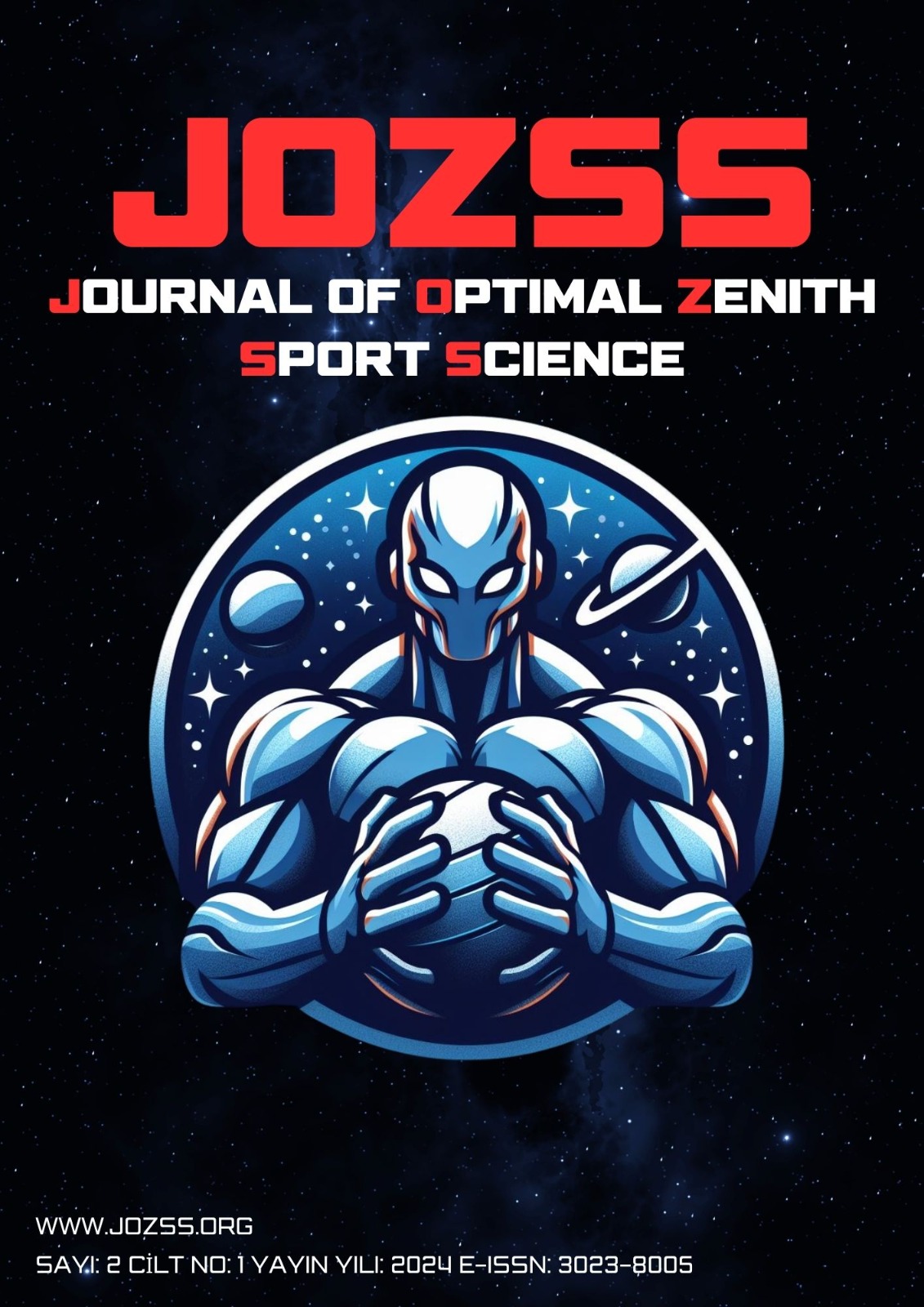The Relationship Between the Distance Per Stroke and Swimming Time in a 50-Meter Freestyle Race for 11-12 Years Old Male Swimmers
DOI:
https://doi.org/10.5281/zenodo.14930654Keywords:
distance per stroke, start, stroke count, stroke rateAbstract
The aim of this research is to investigate the effects of the distance per stroke on race performance and speed in 11-12-year-old swimmers, and to identify and enhance the athletes' performance. A total of 179 male swimmers aged 11-12, who have been licensed and actively participating for at least 3 years, were included in our study. The competitions were recorded with permission from the Turkish Swimming Federation. By analyzing the footage, the distance covered after the start, stroke counts, stroke frequencies, and race times were observed, and the distances covered per stroke were calculated. The obtained data were evaluated using IBM SPSS Statistics 24 software with Pearson and Spearman tests at a confidence interval of p<0.05. A moderate negative correlation was found between the distance covered per stroke and the performance (r=-0.587). Upon examining the results, it was found that the average distance covered per stroke of those ranked in the top twenty-four was greater than that of slower performers. The change in the distance covered per stroke during the first and second 25 meters of the 50-meter freestyle race was statistically significant (p<0.05). In conclusion, it was observed that the distance covered per stroke significantly affects the speed in 50-meter freestyle races, indicating its importance for observing a swimmer's performance and technical capacity. The results of this research offer a different perspective in the design of swimming training and education programs. Coaches and educators can develop more effective strategies to enhance the performance of young swimmers and improve training applications based on these findings.
References
Cohen, R. C., Cleary, P. W., Mason, B. R., & Pease, D. L. (2018). Forces during front crawl swimming
Craig, AB Jr, Skehan, PL, Pawelczyk, JA, Boomer, WL (1985). Elit yüzme müsabakalarında hız, kulaç hızı ve kulaç başına mesafe, Med Sci Sports Exerc, 17 Aralık (6):625-634
Delgado-Gonzalo, R., Lemkaddem, A., Renevey, P., Calvo, E. M., Lemay, M., Cox, K., ... & Bertschi, M. (2016, August). Real-time monitoring of swimming performance. In 2016 38th Annual International Conference
Garland Fritzdorf, S., Hibbs, A., & Kleshnev, V. (2009). Analysis of speed, stroke rate, and stroke distance for world-class breaststroke swimming. Journal of sports sciences, 27(4), 373-378.
Jerszyński, D., Antosiak-Cyrak, K., Habiera, M., Wochna, K. ve Rostkowska, E. (2013). Acemi genç yüzücülerde arka tarama ve ön taramada yüzme tekniğinin seçilmiş parametrelerindeki değişiklikler. İnsan kinetiği dergisi , 37 , 161.
Kurt, Z. B., Gerçek, N., Özüak, A., Güler, Ç., Albayrak, E., & Ramazanoğlu, N. (2023), Yüzücülerde Dolfin Ayak Vuruşunun Kinematik Performans Değerlerine Etkisinin İncelenmesi. Niğde Beden Eğitimi ve Spor Bilimleri Dergisi, 17(3), 361-374.
Madou, T., Vanluyten, K., Martens, J., & Iserbyt, P. (2021). Assessment and Prediction of Swimming Performance Using the SWOLF Index. International Journal of Kinesiology in Higher Education, 1-10.
Madou, T., Vanluyten, K., Martens, J., & Iserbyt, P. (2021). Assessment and Prediction of Swimming Performance Using the SWOLF Index. International Journal of Kinesiology in Higher Education, 1-10.
of the IEEE Engineering in Medicine and Biology Society (EMBC) (pp. 4743-4746). IEEE.
Özüak A., 2023, Teknikleri ile Hızlı Yüzme, İstanbul Tıp Evi, ISBN
-625-8103-69-4
Özüak, A. (2009). The Effects for Middle Distance Swimmers on Performance of Different Stroke Frequency Practi̇ces (Doctoral dissertation, Marmara Universitesi (Turkey)).
Pai, YC, Hay, JG ve Wilson, BD (1984). Elit yüzücülerin vuruş teknikleri. Spor Bilimleri Dergisi , 2 (3), 225-239.
Seifert, L., & Chollet, D. (2009). Modelling spatial–temporal and coordinative parameters in swimming. Journal of Science and Medicine in Sport, 12(4), 495-499.
Şenel, Ö., & Baykal, C. (2017). The relationship between stroke-rate, stroke-length and some anthropometric features in 11-12 year old swimmers 11–12 yaş yüzücülerde kulaç oranı ve kulaç uzunluğunun bazı antropometrik özelliklerle ilişkisi. Journal of Human Sciences, 14(4), 4077-4087.
Washino, S., Murai, A., Mankyu, H., Ogita, F., Kanehisa, H., & Yoshitake, Y. (2021). Lower lung-volume level induces lower vertical center of mass position and alters swimming kinematics during front-crawl swimming. Journal of biomechanics, 121, 110428.
Woinoski, T., & Bajić, I. V. (2021, July). Swimmer stroke rate estimation from overhead race video. In 2021 IEEE International Conference on Multimedia & Expo Workshops (ICMEW) (pp. 1-6). IEEE.
Downloads
Published
How to Cite
Issue
Section
License
Copyright (c) 2024 Berke Şimşek, Dr. Öğr. Üyesi Ali Özüak

This work is licensed under a Creative Commons Attribution 4.0 International License.



